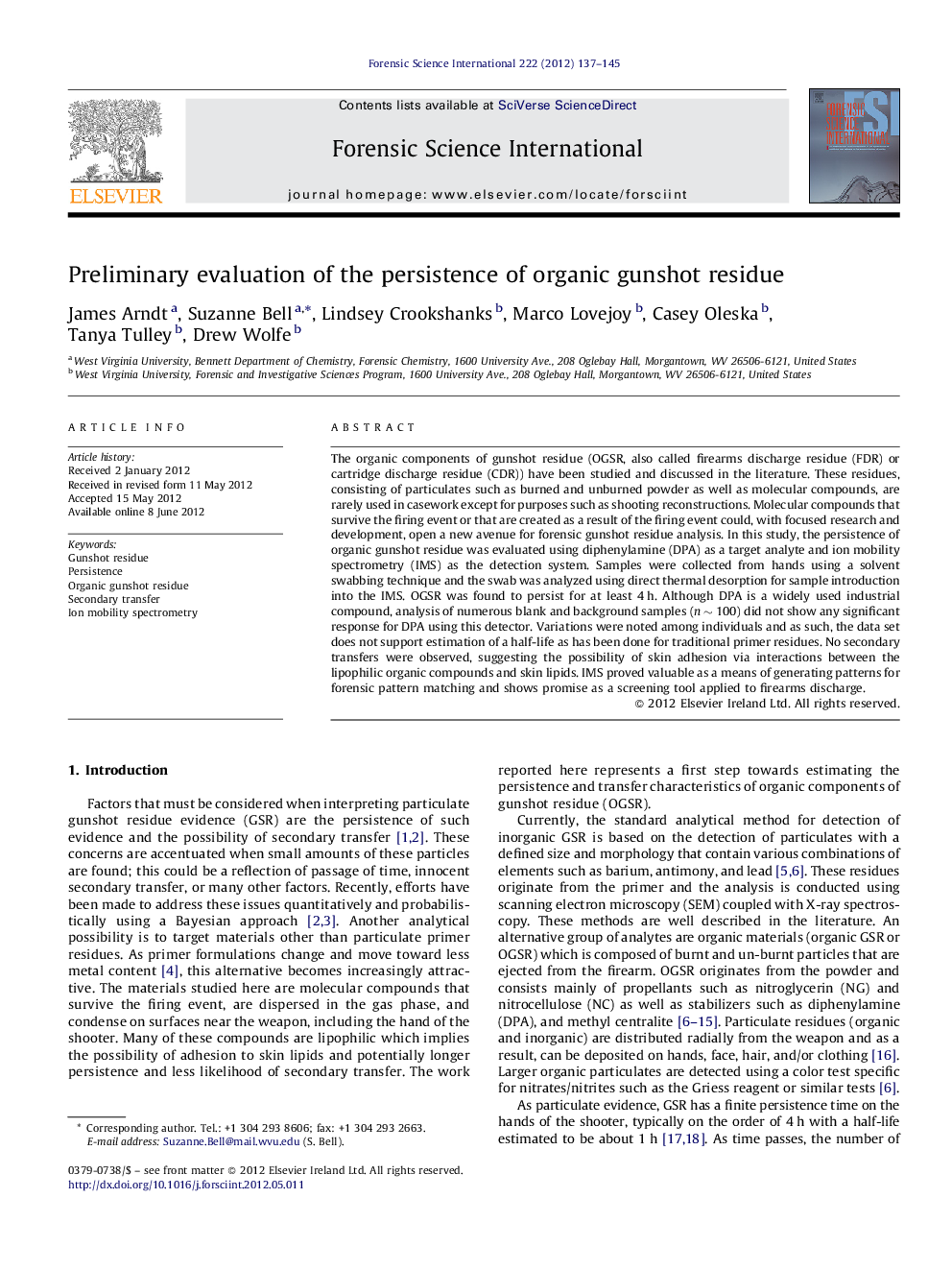| Article ID | Journal | Published Year | Pages | File Type |
|---|---|---|---|---|
| 96485 | Forensic Science International | 2012 | 9 Pages |
The organic components of gunshot residue (OGSR, also called firearms discharge residue (FDR) or cartridge discharge residue (CDR)) have been studied and discussed in the literature. These residues, consisting of particulates such as burned and unburned powder as well as molecular compounds, are rarely used in casework except for purposes such as shooting reconstructions. Molecular compounds that survive the firing event or that are created as a result of the firing event could, with focused research and development, open a new avenue for forensic gunshot residue analysis. In this study, the persistence of organic gunshot residue was evaluated using diphenylamine (DPA) as a target analyte and ion mobility spectrometry (IMS) as the detection system. Samples were collected from hands using a solvent swabbing technique and the swab was analyzed using direct thermal desorption for sample introduction into the IMS. OGSR was found to persist for at least 4 h. Although DPA is a widely used industrial compound, analysis of numerous blank and background samples (n ∼ 100) did not show any significant response for DPA using this detector. Variations were noted among individuals and as such, the data set does not support estimation of a half-life as has been done for traditional primer residues. No secondary transfers were observed, suggesting the possibility of skin adhesion via interactions between the lipophilic organic compounds and skin lipids. IMS proved valuable as a means of generating patterns for forensic pattern matching and shows promise as a screening tool applied to firearms discharge.
